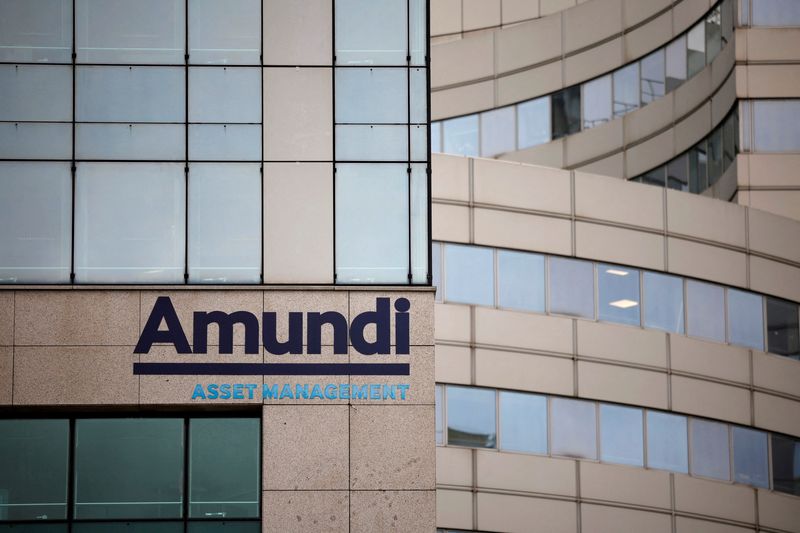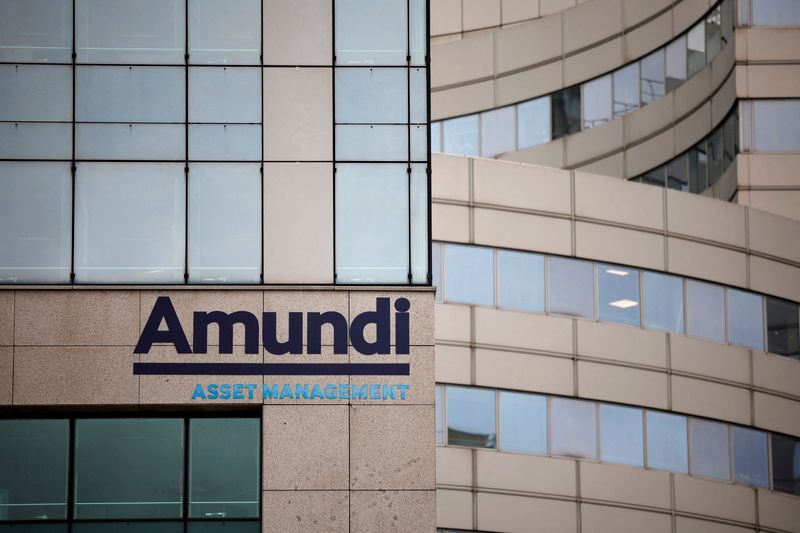Forex
Exclusive-European fund giant Amundi dips toe back into Turkey’s lira


© Reuters. FILE PHOTO: A logo of Amundi is seen outside the company headquarters in Paris, France, February 3, 2023. REUTERS/Sarah Meyssonnier/File Photo
By Marc Jones
LONDON (Reuters) – Amundi, Europe’s largest asset manager and among the top 10 in the world, has started dipping its toe back into the Turkish lira having been impressed by the country’s turnaround efforts since its mid-year elections.
The Paris-based firm, which has $2 trillion worth of assets under management, is yet to go all in given the lira’s ongoing grind lower but says it has taken its first step towards it by reversing long-held bets against the currency.
Sergei Strigo, Amundi’s co-Head of Emerging Markets Fixed Income, said last week’s 500 basis-point interest rate hike to 40% in Turkey was “all very positive” and a sign of its seriousness in tackling its inflation problem.
“We have started to cover our underweight in Turkish lira a few weeks ago,” Strigo told Reuters, referring to the process of taking a more positive view on the currency.
“We are not yet ready to increase the allocation but it is definitely on our radar screen.”
Having seen international appetite for investing in Turkey shredded by the near 85% plunge in the lira’s value over the last five years, more positive moves by heavyweight firms like Amundi will be seen as a signal of hope.
Following his re-election in May, President Tayyip Erdogan brought in a new-look cabinet and central bank that have sought to ditch years of unorthodox policymaking by embracing aggressive interest rate hikes.They have also begun unwinding the state’s heavy-handed financial market regulations to help entice investment and rebuild depleted reserves wiped out over recent years.
Amundi, while the first major fund to formally declare its shift, is not alone in testing the waters, according to other foreign investors and bankers.
Investment bank JPMorgan has recommended the FX forwards trade in recent weeks and both it and rival Goldman Sachs are aggressively pitching Turkish government bonds with durations of 1-10 years, according to some investors.
The scars of Erdogan’s unpredictability however – including firing four central bank chiefs in the last four years – means international funds as a group hold less than 1% of lira-denominated government bonds. “It could be one of the most interesting stories for 2024,” Strigo said, referring to a potential mass return of investor appetite if the policy shift sticks.
For now, the FX forwards that Amundi is using currently price in the lira slumping another 40% to around 40 to the dollar over the next year, which Strigo sees as unlikely. Amundi’s tentative optimism is balanced by upcoming nationwide local elections in March, when vote-getting fiscal stimulus could distract Erdogan from his newfound policy path.
“It is probably the easiest way for now,” Strigo said about the use of FX forwards to express that balance.
Next year could be the time to start buying local currency debt he added, but “local elections have historically been the event when the fiscal (stance) needs to be loosened up to get the necessary votes.”
Seeking to boost confidence in the policy shift – and convince sceptics that Erdogan backs it – Central Bank Governor Hafize Gaye Erkan will hold the bank’s first investor day meeting in New York on Jan. 11.
With the bank having lifted rates to 40% from 8.5% since June, Amundi thinks another hike next month could finish the job. “For sure what is true is that the lira as a currency, considering the carry (interest rates on bonds versus elsewhere in the world), is becoming much more attractive than it use to be.”

 Forex3 years ago
Forex3 years agoForex Today: the dollar is gaining strength amid gloomy sentiment at the start of the Fed’s week

 Forex3 years ago
Forex3 years agoUnbiased review of Pocket Option broker

 Forex3 years ago
Forex3 years agoDollar to pound sterling exchange rate today: Pound plummeted to its lowest since 1985

 Forex3 years ago
Forex3 years agoHow is the Australian dollar doing today?

 Cryptocurrency3 years ago
Cryptocurrency3 years agoWhat happened in the crypto market – current events today

 World3 years ago
World3 years agoWhy are modern video games an art form?

 Commodities3 years ago
Commodities3 years agoCopper continues to fall in price on expectations of lower demand in China

 Economy3 years ago
Economy3 years agoCrude oil tankers double in price due to EU anti-Russian sanctions





















